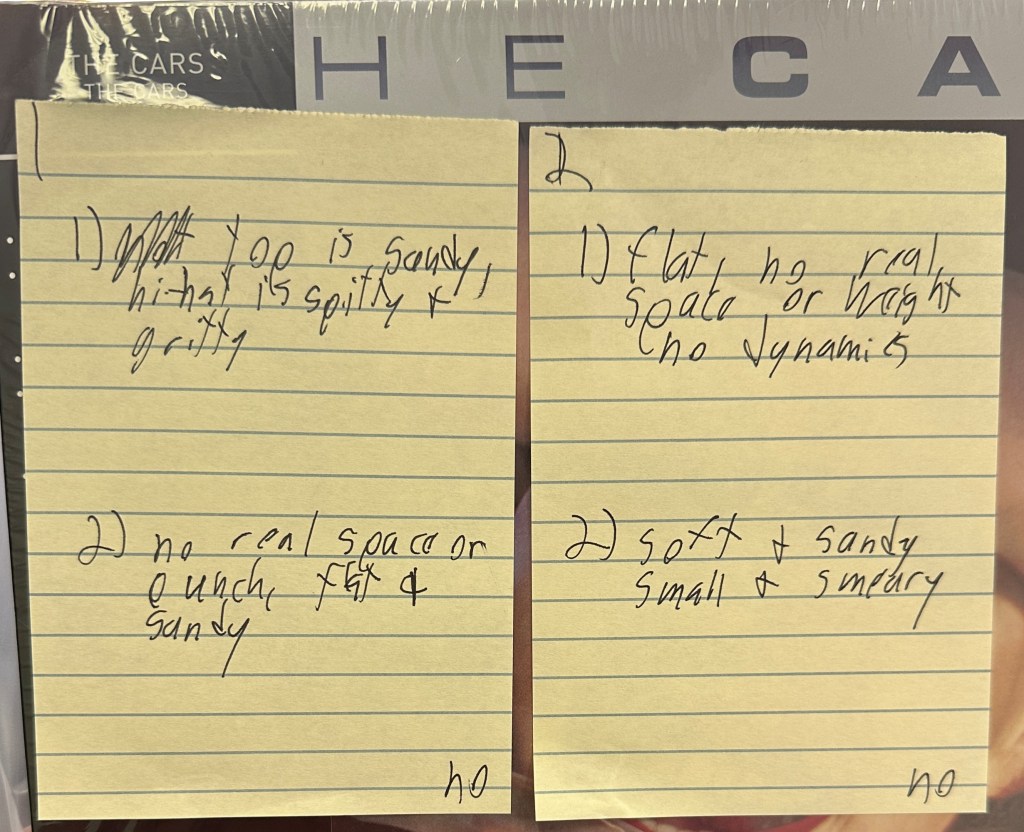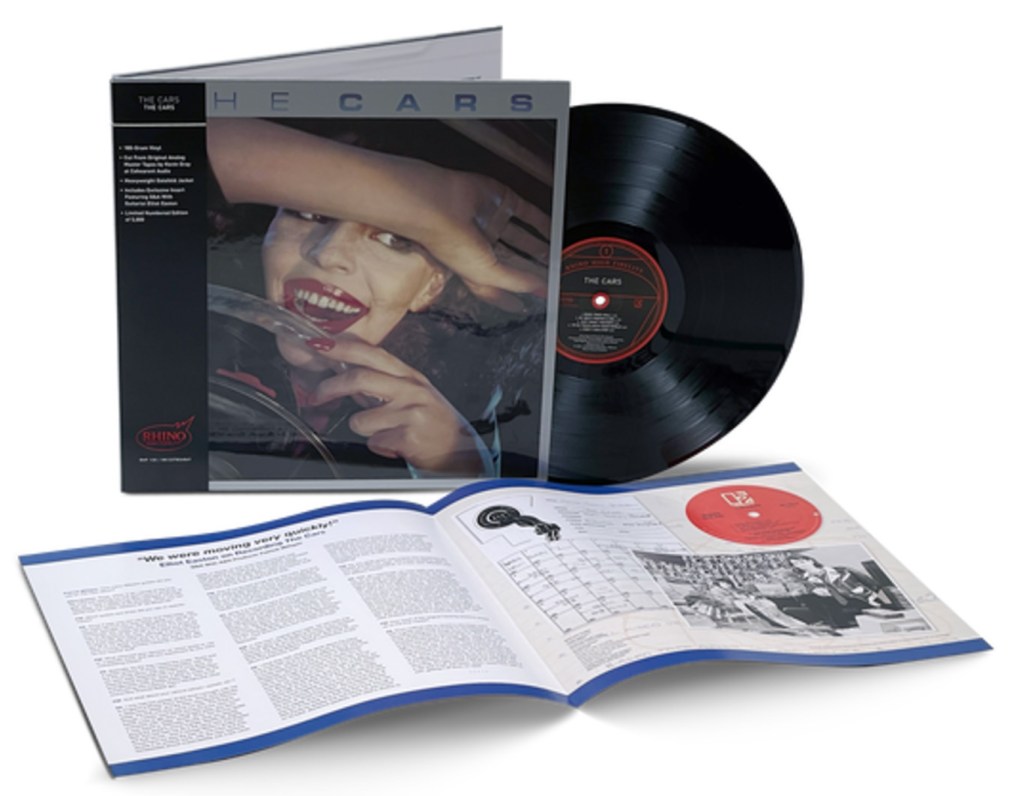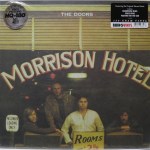 He sure ought to be!
He sure ought to be!
Based on what I’ve just read, if Rhino Records is looking for a head cheerleader, they could hardly do better than Mr. Youman.
I stumbled upon this fellow’s review of The Cars first album on Positive Feedback just a few days ago.
Not sure I would even call it a review. It comes across to me as more of a PR release.
I don’t think Positive Feedback cares either way. They need content, and apparently they consider this content.
The New Rhino High Fidelity Series – The Cars And John Coltrane Kick It Off in Grand Style!
One thing I have noticed about PF is that they do not seem to employ editors of any kind. My friend Robert Pincus writes for them — here is his review of a Dillards album that no one would be likely to buy from us but is probably worth picking up for the five or ten dollars a record store might charge — and there are plenty of typos throughout his reviews and others I have read. You’re on your own with PF. And they are good with however many exclamation marks you may want to use. Four in one paragraph? Bring it on they say!
The following paragraph from Youman’s review contains a ridiculous mistake that any knowledgeable editor should have noticed. Can you spot it? If so, email me at tom@better-records.com
Mastered by George Marino, the 1978 original would seem hard to beat, as the level of detail and attack is quite impressive. It absolutely rocks, and I would be very happy if this was my one and only copy. The 1980 Nautilus, which was half speed mastered by Jack Hunt, is surprisingly very much like the original with some minimal improvement in transparency and dynamic punch. Most would be hard pressed to hear the difference. Of course, the super quiet Japanese vinyl might be contributing to this. We also have the 2009 Mofi, which was half speed mastered by Shawn Britton. In my system, I found it to be dark and somewhat veiled. Bass was just too prominent to my ears. It was almost impossible to sit through the entire Mofi after hearing the OG and the Nautilus. I am a huge Mofi fan, so this was very disappointing.
When someone as clearly lacking in critical listening skills as this fellow has the temerity to compare “the” original and the Nautilus remaster (reviewed here) and declare “Most would be hard pressed to hear the difference,” it upsets me no end. I want to sit such a person down and say that it’s unlikely that anyone with two working ears and a halfway-decent stereo would not hear the difference. You can hardly hear it, that seems clear, but why insult others of a Cars-loving persuasion?
The reference to Giant Steps below is yet more evidence of this fellow’s inability to recognize a bad record when he hears it:
Let’s return to that Rhino catalog and all that it could possibly offer to the audiophile enthusiast. We need to send our wish lists and raise our hands if not bring out the megaphones! Of course we have the Led Zeppelin catalog, but that has been debated ad nauseum on several internet websites and forums. It seems that those in control will not allow it. Can you imagine a Kevin Gray mastering for Led Zeppelin II? There have been several very good reissues for the Black Sabbath catalog, but the original UK pressings are still the ones to beat based on my own comparisons with various other collectors. Lets [sic] get those original analog UK tapes and hand them over to Kevin! I also have a copy of the 45 RPM John Coltrane, Giant Steps released by Rhino in 2008. Some argue that this is best pressing ever and by a wide margin! One of the top ten jazz releases of all time as ranked by many jazz experts. Bernie Grundman did a fantastic job on that reissue but there was only a limited production of 2500 copies. Lets [sic] take another shot at those tapes as part of the new Rhino High Fidelity series!
We make the case that Bernie’s recutting of Giant Steps for Rhino is possibly the worst sounding version of the album ever, and perhaps by a wide margin! He already had his shot, the patient did not survice the operation, what good would it do to put another bullet in the corpse?
Jazz experts may rank it one of the top releases of all time — I certainly would — but it is unlikely they have ever heard Rhino’s bloated, thick, dull, lifeless and altogether unsatisfactory pressing of the album. We gave it an a F and felt that we were being too kind. There is some consolation to be had though: The limited production meant that only 2500 people had to suffer through it upon release. (According to Discogs, these days the average price paid for a copy is $225. We may charge a lot for records, but we charge a lot for good sounding records, not bad sounding records, and that should count for something, shouldn’t it?)
And Kevin Gray already ruined the album once for Rhino, so why would anyone want to hand him the tapes to do it again? Is he now a better mastering engineer than he was in the mid-2000s? What evidence to support this proposition could you possibly supply to those of us who doubt his competence? The shockingly bad sounding records he’s cut recently — Stand Up, Moondance and Rickie Lee Jones are three that spring to mind — make a mockery of the very idea that this guy knows what he is doing.
More comments from the above paragraph of the exploding head variety:
There have been several very good reissues for the Black Sabbath catalog…
Have there? Would someone please name one? We would love to hear it.
but the original UK pressings are still the ones to beat based on my own comparisons with various other collectors.
Then you need to get out more. The UK pressings we have played are not competitive in the least with the best domestic originals. Maybe there are some new reissues that are comparable to the UK pressings, but that is clearly setting the bar much too low. For our last shootout, we noted:
Back in 2018 we wrote: This title will surely make the cut next time we update our Top 100 Rock and Pop List. I would go so far as to say that the best copies of this album have sound as good or better than anything I’ve heard all year, and that’s an awful lot of great sounding records, hundreds and hundreds of them.
It did in fact make the Top 100 a while back. The album is hard to find in audiophile playing condition, but we make the effort and this killer Hot Stamper is the result.
Sabbath recorded their set list more or less live in the studio. This give the recording an unprocessed quality that really stands out on the best copies. The best Green Label pressings sound raw and real, with sound that is a perfect match for the band’s powerfully dark music.
No UK originals ever gave us that sound. The idea that the British pressing would be the best sounding for a British band such as Black Sabbath is something we used to characterize as a myth. Our preference now is to use a less pejorative term and call it a Misunderstanding.
To help our customers better understand why so many of our Hot Stamper pressings are from the “wrong” country, or have the wrong label, or are in stereo instead of mono, or are reissues, even budget reissues, we often add these lines to our listings:
Many audiophiles employ this kind of mistaken audiophile thinking, believing that a British band’s albums must sound their best on British vinyl for some reason, possibly a cosmic one. Those of us who actually play lots of records and listen to them critically know that that is simply not true and never has been.
How did we come by that information? By conducting carefully controlled experiments to find out.
We don’t guess. We don’t assume. We just play lots and lots of records and find out which ones sound better and which ones sound worse.
But enough about this silly review. We laid out for all to see a detailed account of the shortcomings of Kevin Gray’s Cars remaster back in June. Having just reread it, I find no reason to change a word. It’s still awful (the record, not the review).
Kevin Gray is a hack, turning out one junk pressing after another for the benefit of those whose stereos must be exceptionally good at hiding the many faults of his awful records. (We do not have the luxury of being able to hide the faults of the records we play. In order to find the best sounding records ever pressed — our mission here at Better Records — we had no choice but to take our system in the opposite direction, and we and our customers are very glad we did.)
Bernie Grundman and Doug Sax often come in for criticism from us here on the blog, but at least they used to make good records. Nothing Kevin Gray cut without the help of others has ever impressed us in the least, which is why we have a special link for our reviews of those records here.
(more…)


 He sure ought to be!
He sure ought to be!
 More of the Music of The Cars
More of the Music of The Cars
 If I were to try to “reverse engineer” the sound of a system that could play this record and hide its many faults, I would look for a system that was thick, dark and fat, with plenty of tube colorations and no real top end to speak of.
If I were to try to “reverse engineer” the sound of a system that could play this record and hide its many faults, I would look for a system that was thick, dark and fat, with plenty of tube colorations and no real top end to speak of. More of the Music of The Doors
More of the Music of The Doors Just listen to the vocals — they’re all wrong.
Just listen to the vocals — they’re all wrong. 
 See all of our Doors albums in stock
See all of our Doors albums in stock
